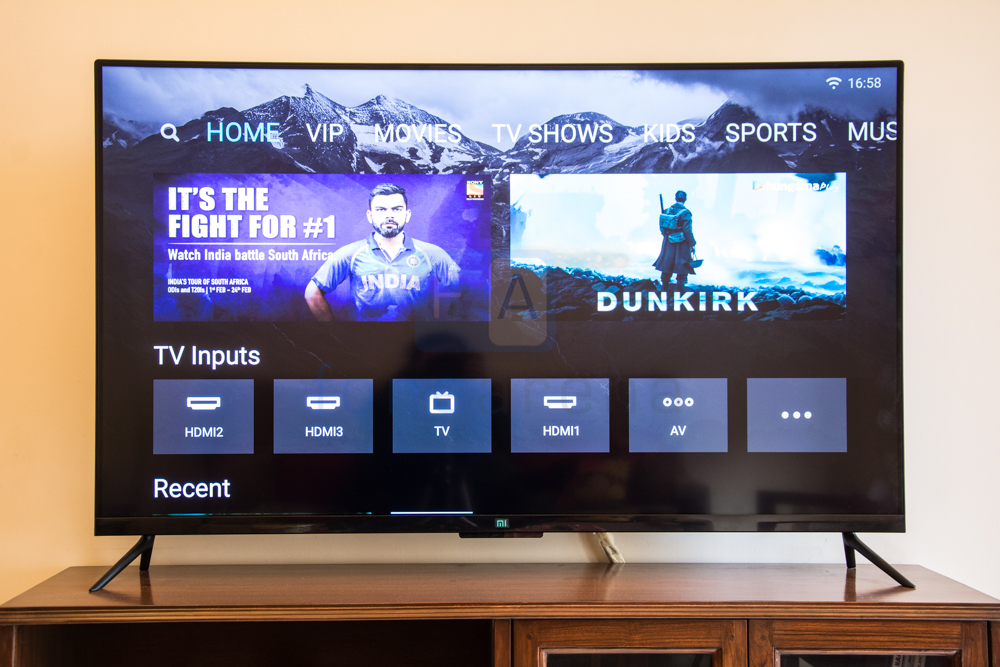
It’s finally here. Fulfilling the hopes and dreams of a million Indians clamoring for Xiaomi’s affordable televisions, the company has delivered. Hyperbole aside, it really is true that there is a lot of hype around the company’s televisions. The product has so far been restricted to their home market so it’s going to be interested to see how the uptake is in India where there’s a fair amount of homegrown competition.
Xiaomi Mi TV 4 specifications
- 55-inch (3840 x 2160 pixels) 4K display with 178-degree viewing angle, 8 ms, 6000: 1 contrast ratio
- 2GB DDR4 dual-channel RAM, 8GB internal memory (eMMC 5.1)
- MIUI TV with PatchWall AI based on Android
- WiFi 802.11 a/b/g/n (2.4 / 5GHz) 2X2, Bluetooth 4.2 LE, Mi Port, 3 x HDMI 2.0, AV, 1 x USB 2.0 x 1, USB 3.0 x 1, Ethernet
- Supports H.265 4K at 60 / 30 fps, H.265 1080P at 60 fps, H.263 1080P at 30 fps, MPEG1 / 2/4 DivX4 the VC-1 / WMV3 1080P at 60 fps, REAL 8/9/10 1080P at 30 fps
- 2x 8W speaker for DOLBY AUDIO, DTS-HD
Design
The Mi TV is a great looking piece of hardware that is truly deserving of being a statement piece in your AV center. It wouldn’t be unfair to say that the Mi TV and the Mi Mix share design language. With minimal bezels on three sides and a barely there lip along the bottom, the Mi TV manages to stand apart and look better than nearly all of the affordable competition. I can wholeheartedly say that it looks better than my LG 4K television which is a great looking television in it’s own right.
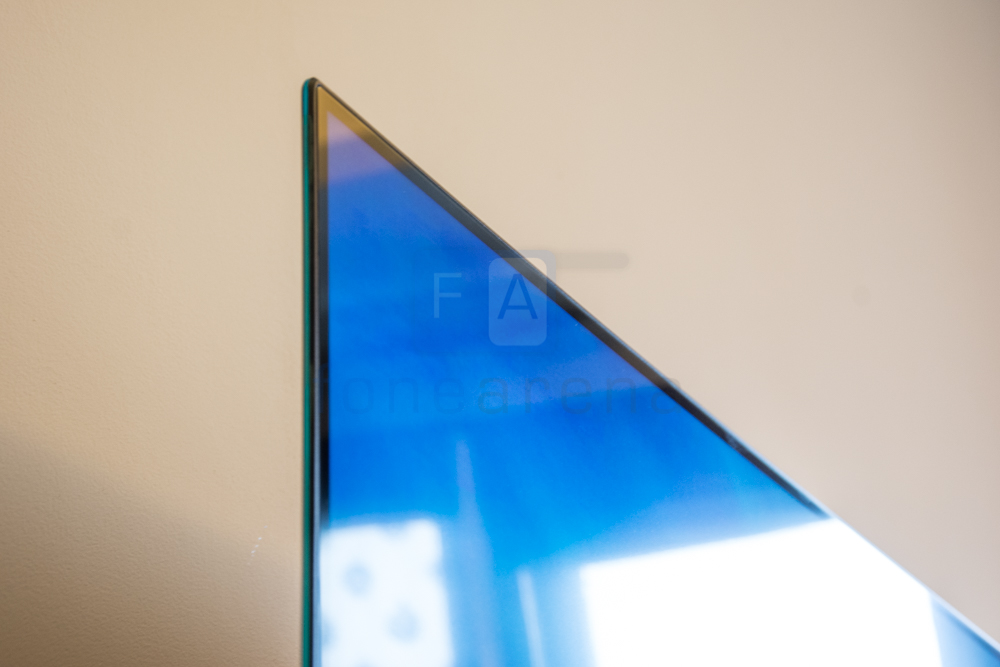
Xiaomi claims that the Mi TV 4 is the world’s slimmest LCD television at 4.9mm. Bragging right aside, the television looks rather smashing. There’s a neat looking blue edge to the frame and the back of the screen has an aluminum sheet giving it additional structural rigidity.
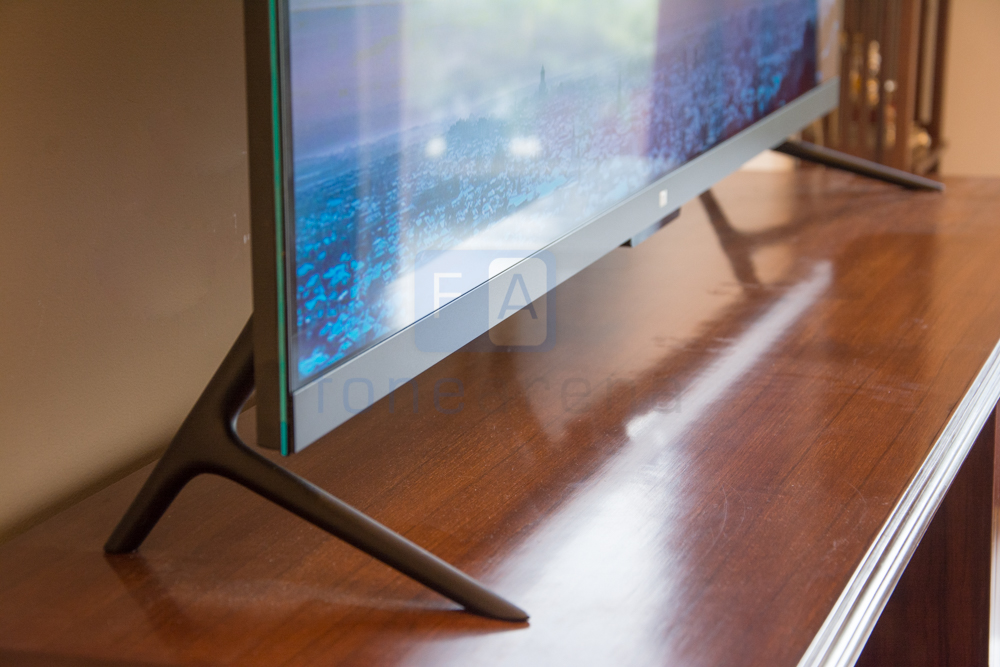
The attention to design continues with the stand that is both discrete and fashion forward. With the panel mounted on the stand, the screen appears to float above the surface. This does add a bit of complexity if you’re a stickler for cable management but looks really nice both up front and from the side.
Over at the back, there’s the typical attention to detail that the company is known for. All ports are well labeled and marked out ensuring that you won’t be left hunting for the correct port even if you have your television mounted up on the wall.
Software
As with any Xiaomi product, the hardware is only part of the equation. The company has developed a whole new version of their Patchwall OS for India. Built on top of Android, it is meant to integrate all your online sources as well as DTH content into one infinite scroll based interface. Does it? Absolutely.
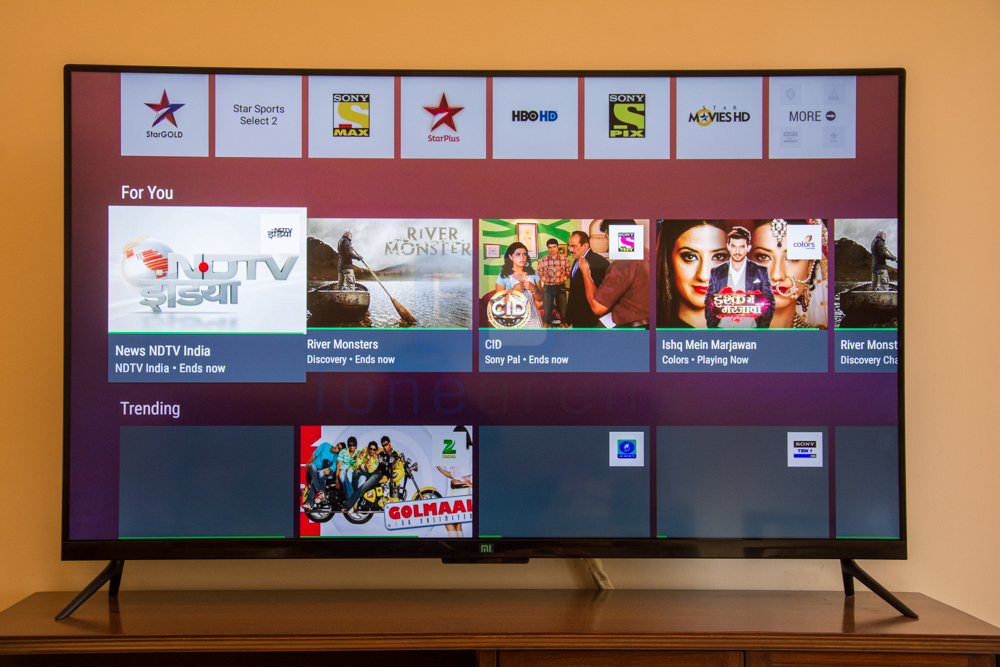
Without a doubt, Xiaomi has pulled off a seemingly daunting task. In a country where DTH accounts for the majority of content viewing, Xiaomi has managed to integrate your dumb set-top box into the fast fluid Patchwall interface. The company this using a combination of Sensara’s software and a USB to infrared cable. Placed in front of your STB, the television blasts infra red codes thereby emulating your STB’s remote. Xiaomi’s television works with over 35 DTH and cable providers across the country and can easily add in support for more.
We’ll detail this further in our full review but the way this works is that when you select a channel in the Sensara powered TV guide, the television broadcasts that specific channel’s number code over the IR blaster and switches to that. Simple enough to have limited points of failure and elegant in its functionality, the integration works beautifully. Sensara on its part has done a great job building out a TV guide for the Mi TV. Not only can you select specific channels through a modern interface but you can also search by program, actors and even see the progress of currently playing content.
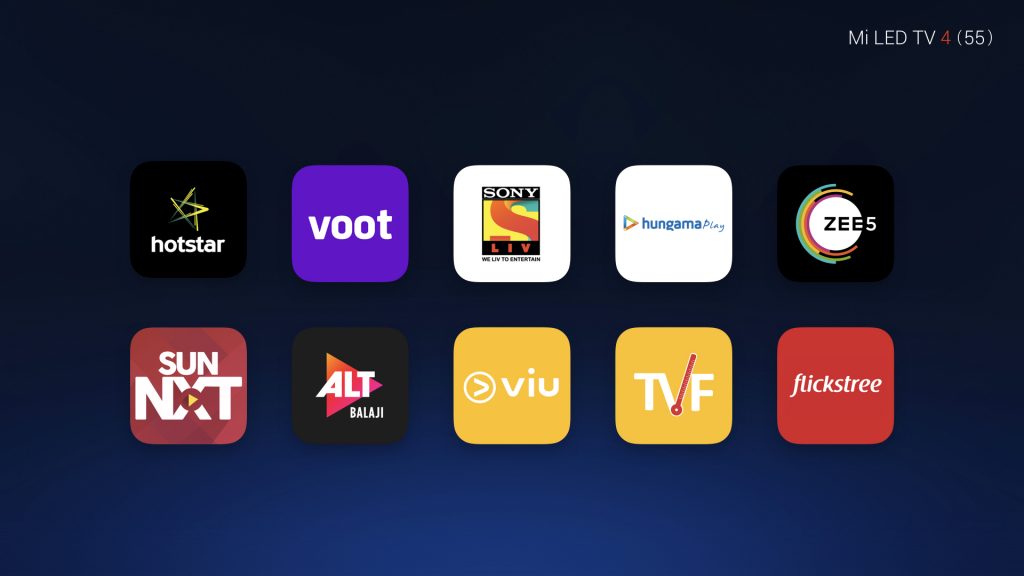
Patchwall builds up a profile of your preferred content and then brings up recommendations on the homepage. What is amazing is that this works across mediums. Yes, Patchwall can give you content recommendations from your DTH channels. In terms of internet content, Xiaomi has partnered with 12 providers at launch and Netflix, Prime Video and even YouTube aren’t amongst them. That is a big miss and we can only hope that the company gets them onboard soon. Also, since the TV is not based on Android TV, there’s no cast protocol support so you can’t just cast Netflix on it. You’ll need to buy a Fire Stick or Apple TV to get Netflix and Prime Video on it.
Screen
The Mi TV 4 ships with a 55 inch 4K HDR SVA panel that on paper sounds very impressive. This is a whole lot of television for the price. We’ve got in-depth content coming up but our initial impressions are that this is pretty good for the price but there are some compromises that have been made to get to the price.
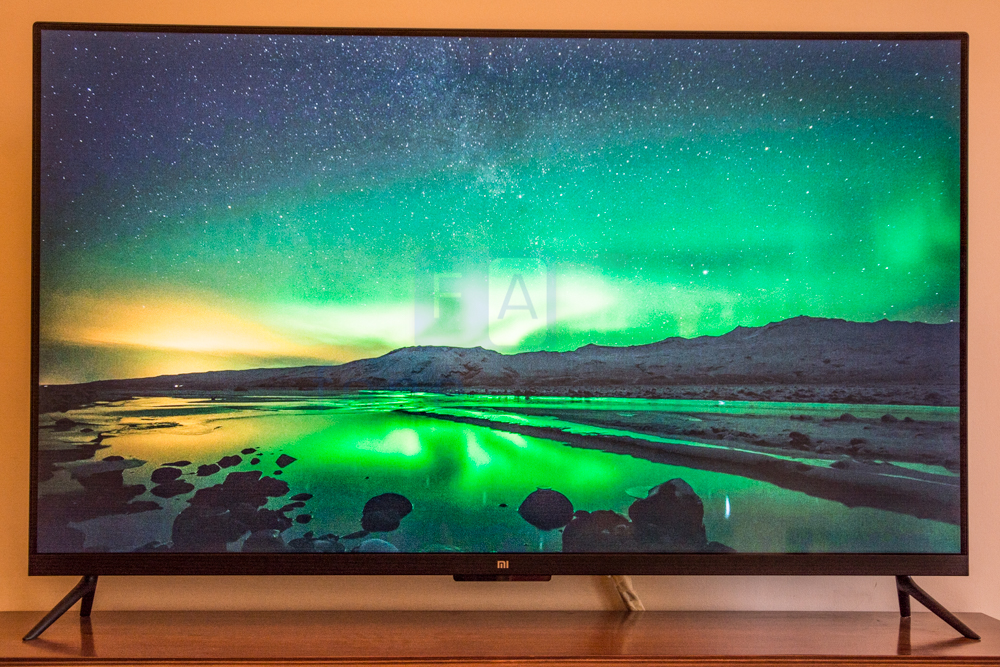
While we were fairly satisfied with the contrast levels on offer, brightness levels are a different story. The Mi TV 4 just doesn’t go as bright as competing LG or Samsung televisions do which makes for a less than satisfactory HDR experience. In addition, there’s no Dolby Vision support here. In addition, we weren’t very satisfied with the 4K upscaling on offer. There’s a fair amount of judder too. We’ll talk more about this in the full review once we’ve spent a bit more time with the television.
Audio reproduction is comparable to other televisions. The Mi TV 4 gets reasonably loud, doesn’t distort and is tuned to deliver clearer audio across voice channels. There’s minimal bass but that’s to be expected from any television. The TV has an optical out port to connect to external speakers, soundbars or receivers.
Conclusion
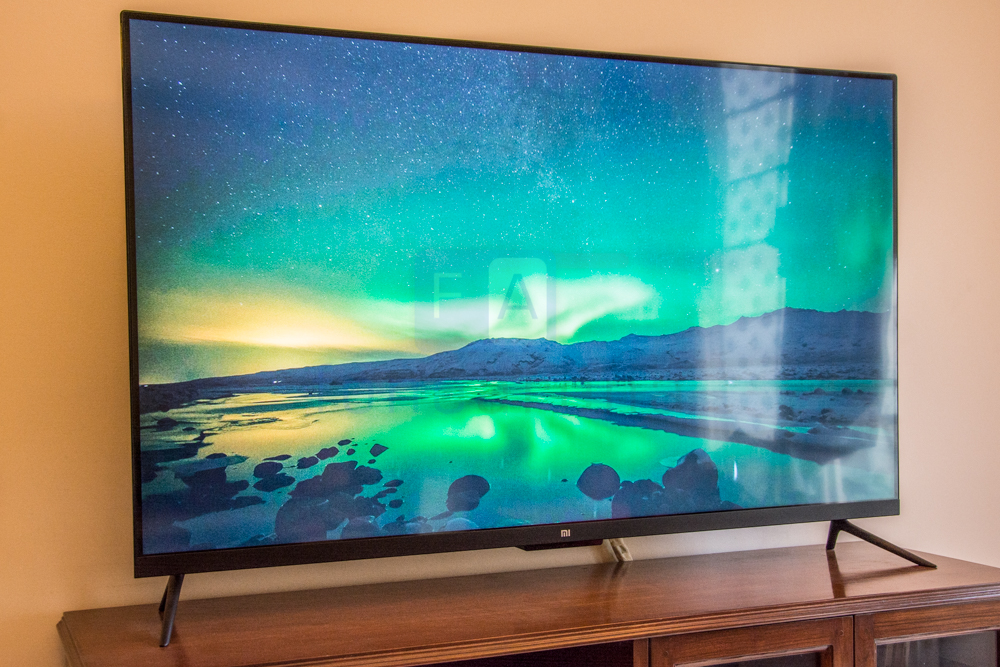
Having spent just a few days with the TV, we’re still early on in our reviewing process. We’ll talk more about it in the coming days but our initial impressions suggest that despite all 0ur concerns and nitpicking, this is a whole lot of television for the asking price. Rs. 39,990 for a 55-inch panel, let alone a 4K HDR capable panel is a great deal. If you’ve got the budget for a higher end television then, by all means, you should go for it since you will definitely get a noticeable bump in image quality. For everyone else, the Xiaomi could very well be the go-to option. It will be available exclusively from Flipkart as well as Mi.com and Mi Home Stores from February 22nd.


